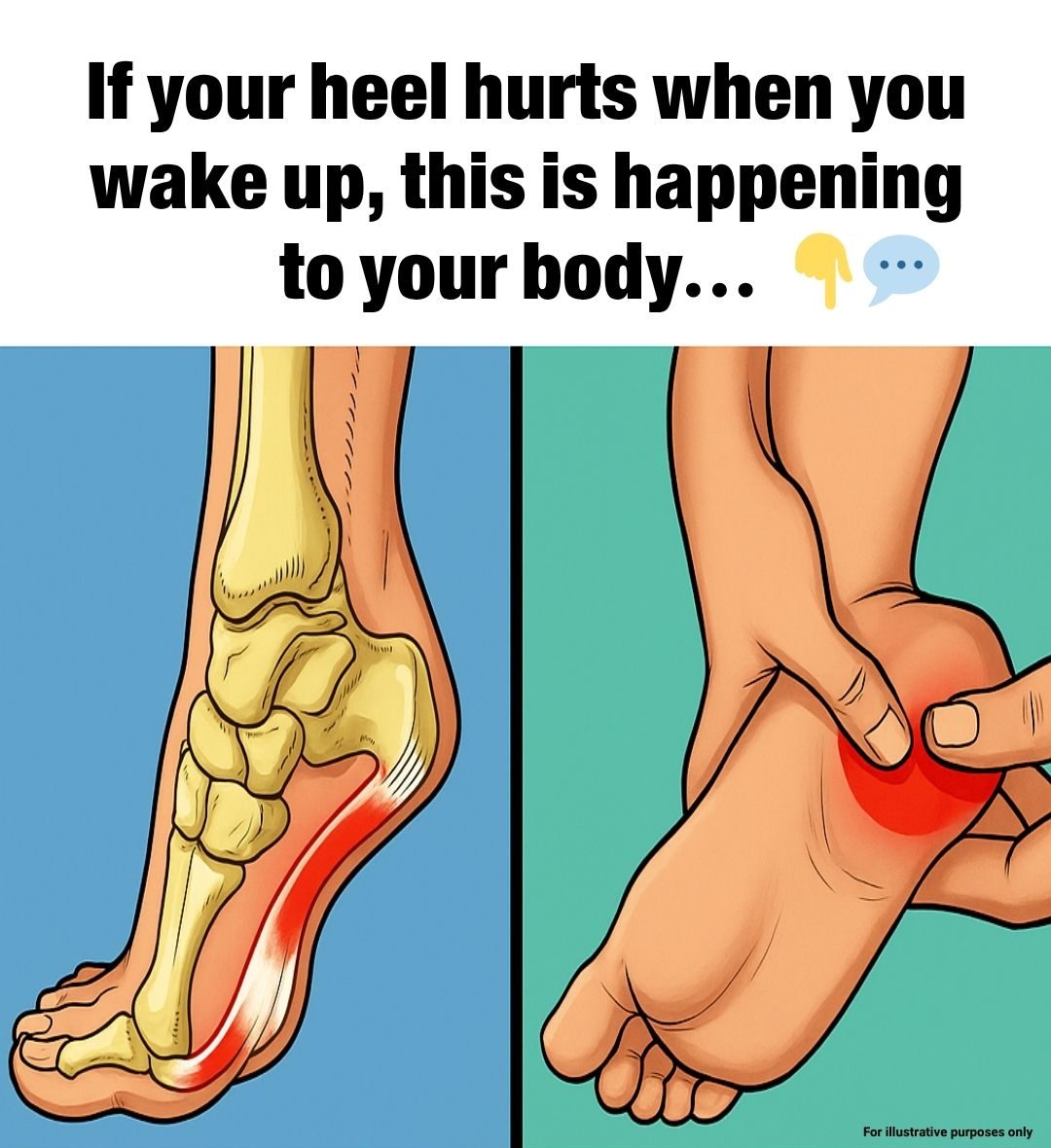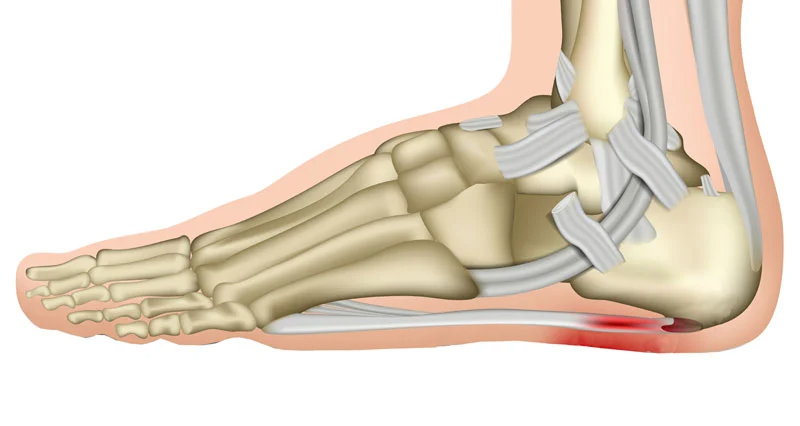If you often experience sharp pain in your heel when you take your first steps in the morning or after sitting for a long time, you’re not alone. This common and frustrating issue is most often caused by a condition known as plantar fasci.

What Is Plantar Fasciitis?
Plantar fasciitis is an inflammation of the plantar fascia — a thick, fibrous band of tissue that runs along the bottom of your foot, connecting your heel bone to your toes. This ligament supports the arch of your foot and plays a crucial role in walking. When it becomes irritated or damaged, it can cause intense heel pain.
Common Symptoms
- Sharp or stabbing pain in the heel, especially with the first steps in the morning
- Pain that decreases with activity but returns after periods of rest
- Tenderness in the arch or sole of the foot
- Mild swelling or warmth around the heel

What Causes It?
Plantar fasciitis can develop for a variety of reasons, often due to repetitive stress or overuse. Common risk factors include:
- Prolonged standing or walking, especially on hard surfaces
- Running or engaging in high-impact sports
- Wearing unsupportive shoes (e.g., flip-flops, flat sandals, worn-out sneakers)
- Foot structure issues such as flat feet or high arches
- Tight calf muscles or Achilles tendons
- Obesity, which increases strain on the plantar fascia
Why the Pain Is Worse in the Morning
During sleep or rest, the foot remains in a relaxed, flexed position. This allows the plantar fascia to tighten and contract. When you stand up and take your first steps, the fascia is suddenly stretched, causing microtears and pain. Over time, this repeated stress leads to inflammation and worsening discomfort.
Diagnosis
Most cases of plantar fasciitis are diagnosed based on a physical exam and symptom history. A healthcare provider may check for tenderness, foot structure, and walking patterns. In rare cases, imaging tests like X-rays or ultrasound may be used to rule out other causes of heel pain (e.g., fractures or heel spurs).

Effective Treatments for Plantar Fasciitis
The good news is that most people recover fully with conservative treatment. Here are the most recommended remedies:
1. Stretching and Strengthening Exercises
Regular stretching of the plantar fascia, Achilles tendon, and calf muscles helps improve flexibility and reduce tension.
Try these simple exercises:
- Towel stretch: Sit with your legs extended, loop a towel around your foot, and gently pull toward you.
- Calf stretches: Stand facing a wall, step one foot back, and lean forward to stretch your calf.
- Toe curls and marble pickups: Strengthen the foot muscles.
2. Ice Therapy
Roll a frozen water bottle or apply an ice pack to the heel for 15–20 minutes, several times a day to reduce inflammation.
3. Supportive Footwear
- Switch to shoes with:
- Good arch support
- A slightly raised heel
- Cushioned soles
Avoid walking barefoot, especially on hard surfaces.
4. Orthotic Inserts
Over-the-counter or custom-made orthotics can redistribute pressure and support the arch, relieving strain on the plantar fascia.
5. Rest and Activity Modification
Limit activities that worsen the pain. Avoid running, jumping, or standing for long periods until the condition improves.
6. Pain Relief
Nonsteroidal anti-inflammatory drugs (NSAIDs) like ibuprofen can help manage pain and inflammation in the short term.

When to See a Doctor
You should consult a healthcare provider if:
- Pain lasts more than a few weeks despite self-care
- Pain interferes with walking or daily activities
- You notice swelling, redness, or numbness
In more stubborn cases, your doctor may recommend:
- Physical therapy
- Night splints to stretch the fascia during sleep
- Corticosteroid injections (in severe cases)
- Shockwave therapy
- Surgery (rarely needed, reserved for chronic cases that don’t respond to other treatments)
Prevention Tips
Once you’ve recovered from plantar fasciitis, these steps can help prevent recurrence:
- Maintain a healthy weight
- Wear proper shoes, especially during exercise
- Stretch regularly, especially after activity
- Avoid walking barefoot on hard floors
- Replace worn-out running shoes every 400–500 miles
Final Thoughts
Plantar fasciitis is a common but manageable condition. With proper care, most people recover without surgery. By understanding the cause and implementing supportive habits—like stretching, wearing the right footwear, and resting—you can take pressure off your heels and get back on your feet pain-free.
If you’re experiencing persistent heel pain, don’t ignore it. Early treatment is the key to a faster recovery and avoiding chronic discomfort.


